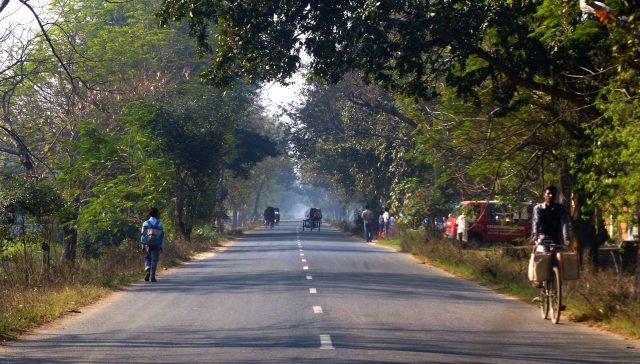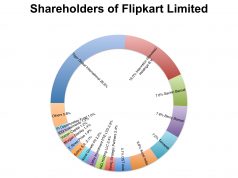Recently, an upcoming long-distance road trip in Gujarat evoked many comments along the lines of, "at least the roads are supposed to be good." Indeed, over a distance of 1200 Kms, most of the roads were paved and in generally good condition. This led to curiosity about the differences in roads between the states. Analysis of data compiled by the central government reveals a wide difference among the states in the extent of roads and the amount of expenditure on roads, and raises some puzzling questions.
In order to compare states with such large differences in area and population, first the data has to be normalized. For example, Uttar Pradesh covers a large territory and has about 400,000 Km of total roads, while Meghalaya is much smaller and has 12,000 Km of road. Clearly there is no way to compare those two numbers. The Indian government uses road density, which is the total length of road divided by the total surface area, to compare India with other countries. The national road density, which could also be considered the average, was 1.48 km of road/square km of area in 2012. Chart 1 below shows the road density by state, both for total amount of road (including national highways, state highways, rural roads, panchayati raj roads and municipal roads) and the amount that is surfaced (generally meaning black-top or concrete).
Kerala stands out with the highest density of total road, at 5.5 km of road/sq. km of area, while Jammu and Kashmir have the lowest density at 0.16km of road/sq. km of area. A major reason for J&K's low density is that road lengths for the northern part of the state are not known or counted, but that area is part of the state's official area. Gujarat has a road density far below the national average for total road at 1.5 km/sq. km. It is closer to but still below the average in density of surfaced road. The difference between Bihar and Jharkhand, which were one state a little over a decade ago, is quite stark, whereas Madhya Pradesh and Chhattisgarh are much closer.
The government also publishes each state's expenditure on roads and bridges. Although there is no breakdown on how much money was spent on new roads as opposed to repairs or resurfacing or administrative costs, nevertheless one might expect the costs to be similar across states, especially over several years. Yet, as Chart 2 and Chart 3 show, here as well, there are major differences.
Looking at Chart 2, assuming that all of Goa's road expenditure went to building new road, it would have spent an exorbitant Rs687 lakh per kilometre of new road. Bihar's roads would have been the second most expensive, at Rs147 lakh/km. The chart also examines whether applying the expenditure to the increase in surfaced road would change the cost per kilometer. If a state surfaced a lot more road than it built, the "Surfaced" value would be much less than the "Total" value. While a few states did make such improvements on existing road, in most states, that is not the case.
Chart 3 looks at how much each state's expenditure works out to on average per kilometre of existing road. Assam and West Bengal are at the low end of the range at Rs0.2 lakhs/km and Bihar again tops out at Rs3.1 lakh/km.
A third way to analyze this data is to look at each state's share of the total expenditure, total new road and total existing road in the country. It makes sense that a state's expenditure and amount of existing road would be similarly proportional, and indeed that holds for states such as Andhra Pradesh, Assam, Karnataka and Uttar Pradesh. However, Bihar's spending is completely out of proportion with both its share of existing road and new road. While it has only only 1.3% of new road and 2.9% of existing road, Bihar alone accounted for 12.8% of the total expenditure.
So Bihar must have spent its road money on some other use.
On the other hand, Maharashtra, Rajasthan and West Bengal spent proportionally much less than their share of new or existing road. Maharashtra, Uttar Pradesh, West Bengal and Rajasthan accounted for 60% of the 793,890 kilometres of new road built between 2007 and 2011. Maharasthra alone addd 187,379 km of new road, nearly half the distance from the earth to the moon! Yet their combined combined share of total expenditures was only 26%.
There is a wide disparity among the states in road density and expenditure per kilometre of road. Some of it probably has to do with geography, some with population density and some with priorities. By most measures, Bihar sticks out for having spent a lot on its roads, the question is whether it has that much more to show for it.
Road data comes from Basic Road Statistics 2011-12, 2008-2011 and 2004-2008 published by the Ministry of Road Transport and Highways. State data is compiled by the union Ministry of Road Transport and Highways from individual state reports. The amount of surfaced road length reported by Goa, Bihar and Kerala decreased from 2007 to 2011. In reality, it is questionable whether the surfaced road area actually shrank, and probably reflects changes in methodology.







